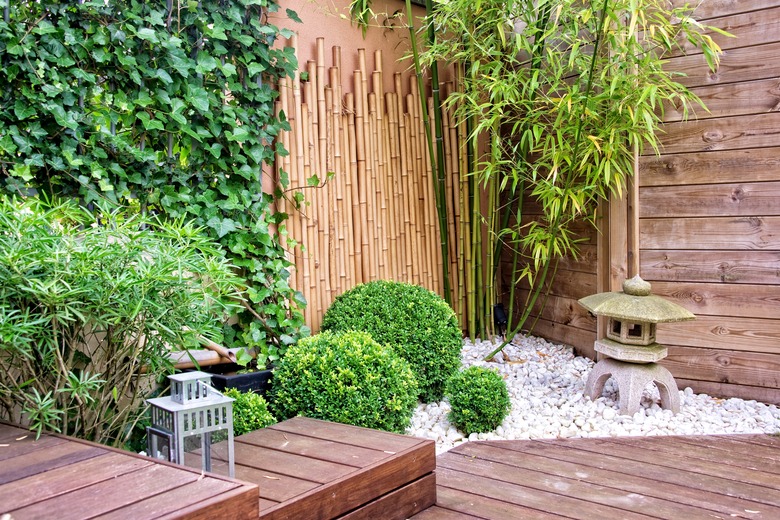How To Plant Bamboo Stalks
You can plant bamboo (Bambusoideae) stalks fairly easily if the stalk is attached to a root ball. Note that there are more than 1,000 bamboo species and 100 genera, per Palomar College. While some lend themselves to indoor growth, many prefer to be grown outside in U.S. Department of Agriculture plant hardiness zones 5 through 9. If you're looking to plant bamboo stalks attached to a root ball indoors, try a species such as golden bamboo (Pleioblastus fortunei, USDA zones 4-10), compact golden striped bamboo (Pleioblastus viridistriatus, USDA zones 5-9) or dwarf fern-leaf bamboo (Pleioblastus pygmaeus, USDA zones 5-10).
Tips for Planting Bamboo Outdoors
It's best to start with a clumping variety of bamboo, such as Fargesia denudata (USDA zones 5 through 9), rather than seeds, since the seeding cycle is quite slow (75 years) with a short period of seed viability, and clumping varieties permit the sort of landscape look many gardeners are looking for minus the potential for invasiveness that characterizes running bamboo types. This versatile plant is able to survive in a variety of conditions, but full sun is best. Wait until the spring or early fall for outside planting and choose a spot with moist, well-draining, fertile and slightly acidic soil. Depending on the variety of bamboo, allow 3 x 3 feet to 3 x 10 feet for spread; the more room, the better.
To get started, use a hand shovel to dig out a hole about two times as wide as the bamboo's root ball and only as deep as the roots. Then, gently place the plant in this hole and spread out its roots a little with your hands. Fill up the hole with soil, tamping down the soil carefully. Then, water the hole to fill up any remaining air pockets.
Once the bamboo plant is established, it only needs about 1 inch of water each week. Take care not to rake up its leaves, as they keep the roots moist and protected. You can add mulch to the soil around bamboo plants, which will encourage growth by conserving moisture and keeping roots cool; a layer of compost in the spring will also help. Certain bamboo varieties grow very quickly, so you may need to keep yours under control with frequent pruning. Though the initial plant maintains a stable height, the new shoots can grow up to 4 feet in one day.
Planting Bamboo Stalks Indoors
Some bamboo varieties are easy to grow indoors because they do not need much light, but verify with a source like Bamboo Garden that yours is the right type. Set the plant's container atop a pebble tray that contains a small amount of water. This sort of setup is recommended to ensure that the air around bamboo plant receives consistent moisture via evaporation.
Bamboo plants like humidity, so carefully monitor this in your space. You can periodically spritz your bamboo with a spray bottle filled with water. You might even use a water meter to ensure that soil moisture is appropriate (try to keep the reading in the middle of the meter).
To keep your bamboo plant looking fresh, you should periodically trim the older canes at soil level or remove heavy branches that might cause the others to be pulled down. You may notice that the foliage of your indoor bamboo plant changes colors slightly with the seasons. The leaves could yellow a bit in spring or fall, and they might even curl. If you are providing proper care to the plant, this should not be a matter of concern.
